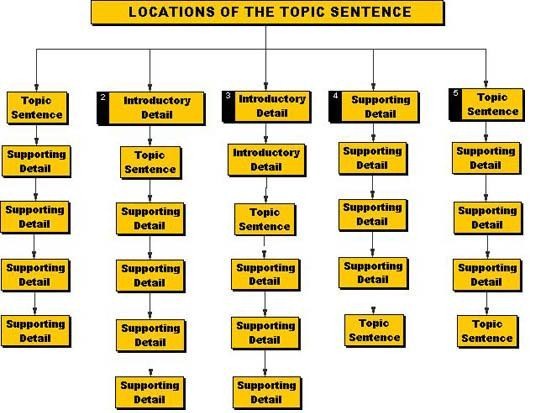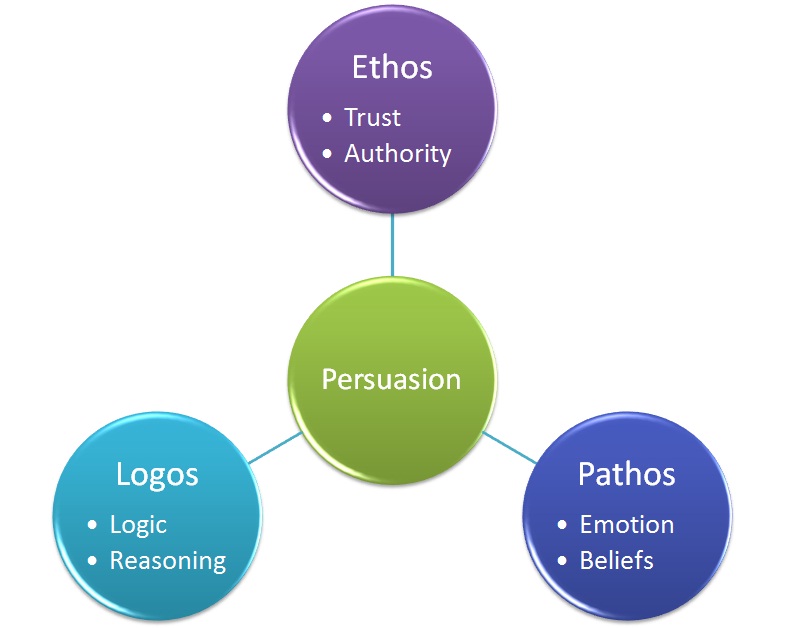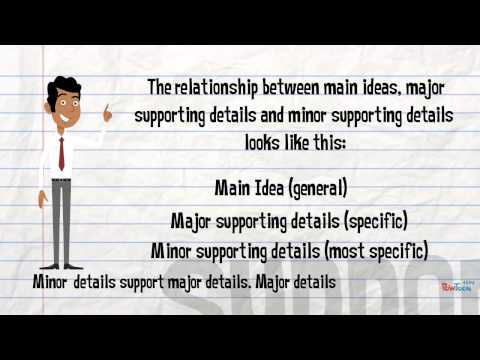3.6: Paragraph Development- Supporting Claims
- Page ID
- 58263
- Analyze the types and uses of evidence and supporting details in paragraphs
Main Ideas in Paragraphs

A paragraph is composed of multiple sentences focused on a single, clearly-defined topic. There should be one main idea per paragraph, so whenever an author moves on to a new idea, he or she will start a new paragraph. For example, this paragraph defines what a paragraph is, and now we will start a new paragraph to deal with a new idea: how a paragraph is structured.
Paragraphs are actually organized much like persuasive papers are. Just like a paper has a thesis statement followed by a body of supportive evidence, paragraphs have a topic or key sentence followed by several sentences of support or explanation.
After the topic or key sentence introduces the main idea, the remainder of the sentences in a paragraph should support or explain this topic. These additional sentences might detail the author’s position on the topic. They might also provide examples, statistics, or other evidence to support that position. At the end of the paragraph, the author may include some sort of conclusion or a transition that sets up the next idea he or she will be discussing.
Using the Thesis to Organize Paragraphs
While your main claim should guide the entire argument, key ideas included in the thesis statement can be used in topic sentences to guide your paragraphs.
Using the sample thesis statement, “Social media sites like Twitter, Facebook, and YouTube have been indispensable tools to young activists from Tahrir Square to Wall Street,” the argument might be outlined as follows:
- Introduction: Social media sites like Twitter, Facebook, and YouTube have been indispensable tools to young activists from Tahrir Square to Wall Street.
- Twitter contributed to
- Arab Spring
- Occupy Wall Street
- Facebook contributed to
- Arab Spring
- Occupy Wall Street
- YouTube contributed to.
- Arab Spring
- Occupy Wall Street
- Conclusion: The Arab Spring and Occupy Wall Street movements may not have happened without the use of social media.
In the above outline, Twitter, Facebook, and YouTube are used to divide the body of the essay into three main sections, and then those sections are subdivided into Egypt and the United States. Alternately, you could divide the body of the essay into two main sections—one for Egypt and the other for the United States—and then subdivide by Twitter, Facebook, and YouTube. The resulting outline would look like this:
- Introduction: Social media sites like Twitter, Facebook, and YouTube have been indispensable tools to young activists from Tahrir Square to Wall Street.
- Arab Spring
- YouTube
- Occupy Wall Street
- YouTube
- Conclusion: The Arab Spring and Occupy Wall Street movements may not have happened without the use of social media.
Either of these outlines would be a clear progression from the thesis statement and would help the reader to see how each key idea furthers the main claim.
Supporting Ideas and Details
A text’s thesis statement helps guide its overall organization and the development of the topic sentences that will constitute the body paragraphs. Now let’s examine the rest of the “stuff” that makes a paragraph work.
First, watch this video that details the relationship between a topic or key sentence and supporting details, using the metaphor of a house. The video establishes the difference between major and minor details, which will be useful to apply in future discussions.
(The video has instrumental guitar for audio, but no spoken words, so can be watched without sound if desired.)
The following image shows the visual relationship between the overall thesis, topic sentences, and supporting ideas:
Remember, readers often expect the topic or key sentences to be at the beginning of the paragraph but they don’t have to be. Sometimes the paragraph’s purpose in a larger piece of writing necessitates that its topic sentence occurs elsewhere.
This image shows where a topic sentence might reside in the paragraph, in relation to the rest of the supporting details:

How does the structure of a body paragraph support a thesis?

Many authors use the PIE format to structure their essays. PIE = point, illustration, explanation. The point furthers a thesis or claim, the illustration provides support for the point, and the explanation tells the audience why the evidence provided furthers the point and/or the thesis.
For example, let’s consider an essay written by a college student, Tareq Hajj. He argues that his university should not use a plus/minus grading scale because the proposed scale does not include a higher weight for A+ scores/. In his argument he makes the Point that “Without the A+, students with high grades in the class would be less motivated to work even harder in order to increase their grades.”
He Illustrates with a quote from a professor who argues, “‘(students) have less incentive to try’” (Fesheraki, 2013).
Hajj then Explains that “not providing [the most motivated students] with additional motivation of a higher grade … is inequitable.”
Through his explanation, Hajj links back to his claim that, “A plus-minus grading scale … should not be used…” because, as he explains, it is “inequitable.” The PIE structure of his paragraph has served to support his thesis.
Using Evidence
Ever heard the phrase “everyone is entitled to his opinion”? It is indeed true that people are free to believe whatever they wish. However, the mere fact that a person believes something is not an argument in support of a position. If a text’s goal is to communicate effectively, it must provide valid explanations and sufficient and relevant evidence to convince its audience to accept that position.
What are the types of evidence?
Any text should provide illustrations for each of its points, but it is especially important to provide reliable evidence in an academic argument. This evidence can be based on primary source material or data (the author’s own experience and/or interviews, surveys, polls, experiments, that she may have created and administered). Evidence can also stem from secondary source material or data (books, journals, newspapers, magazines, websites or surveys, experiments, statistics, polls, and other data collected by others).
Let’s say, for example, that you are reading an argument that college instructors should let students use cell phones in class. Primary source material might include a survey the author administered that asks students if policies forbidding cell phone usage actually stops them from using their phones in class. Secondary sources might include articles about the issue of cell phone usage in class from scholarly or academic journals.
How do authors decide what kinds of evidence to use?
You’ve likely learned in the past about different types of rhetorical techniques that writers use when making claims in their writing. These appeals are referred to by their Greek names: logos (the appeal to logic), pathos (the appeal to emotion), and ethos (the appeal to authority).

Logical Appeals (Logos)
Authors using logic to support their claims will include a combination of different types of evidence. These include the following:
- established facts
- case studies
- statistics
- experiments
- analogies and logical reasoning
- citation of recognized experts on the issue
Authoritative Appeals (Ethos)
Authors using authority to support their claims may draw from different sources as evidence for their claims. These include the following:
- personal anecdotes based on substantial personal experience
- illustration of deep knowledge on the issue
- citation of recognized experts on the issue
- testimony of those involved first-hand on the issue
Emotional Appeals (Pathos)
Authors using emotion might support their claims with some of the same kinds of evidence but employed to achieve different ends. These include the following:
- touching personal anecdotes
- compelling narratives
- emotional or stirring testimony of those involved first-hand on the issue
As you can see, there is some overlap on these lists. One technique might work simultaneously on multiple levels.
Regardless of what kind of evidence you use, an effective paragraph will guide the reader with a clear topic sentence that articulates the claim and then use evidence, illustration, support, and discussion to convince the reader.
Contributors and Attributions
- Modification, adaptation, and original content. Provided by: Lumen Learning. License: CC BY: Attribution
- Image of point. Authored by: Joshua Rappeneker. Located at: https://flic.kr/p/mWga. License: CC BY-SA: Attribution-ShareAlike
- Image of How to Differentiate. Authored by: NUR SYAFIQAH ABDUL KADAR, NUR ATIKAH MANAN, NUR SHAFIQAH SHUKRI, ZHARIF ISKANDAR RAJALIE. Provided by: Verbal Warfare. Located at: verbalwarfare.wikispaces.com/Vocabulary+Building+In+English+I. License: CC BY-SA: Attribution-ShareAlike
- Image of Locations of the Topic Sentence. Authored by: NUR SYAFIQAH ABDUL KADAR, NUR ATIKAH MANAN, NUR SHAFIQAH SHUKRI, ZHARIF ISKANDAR RAJALIE. Provided by: Verbal Warfare. Located at: verbalwarfare.wikispaces.com/Vocabulary+Building+In+English+I. License: CC BY-SA: Attribution-ShareAlike
- Image of Persuasion. Authored by: Mrs. Adcock. Located at: agi241classes.wikispaces.com/Fifth+Grade. Project: Computer Class AGI241. License: CC BY-SA: Attribution-ShareAlike
- Supporting Details. Authored by: Mastering the Fundamentals of College Reading and Writing. Located at: https://youtu.be/uE74-8YAV9E. License: All Rights Reserved. License Terms: Standard YouTube License
- Academic Argument Essay. Provided by: Radford University. Located at: http://lcubbison.pressbooks.com/chapter/core-101-academic-argument-essay/. Project: Core Handbook. License: Public Domain: No Known Copyright



